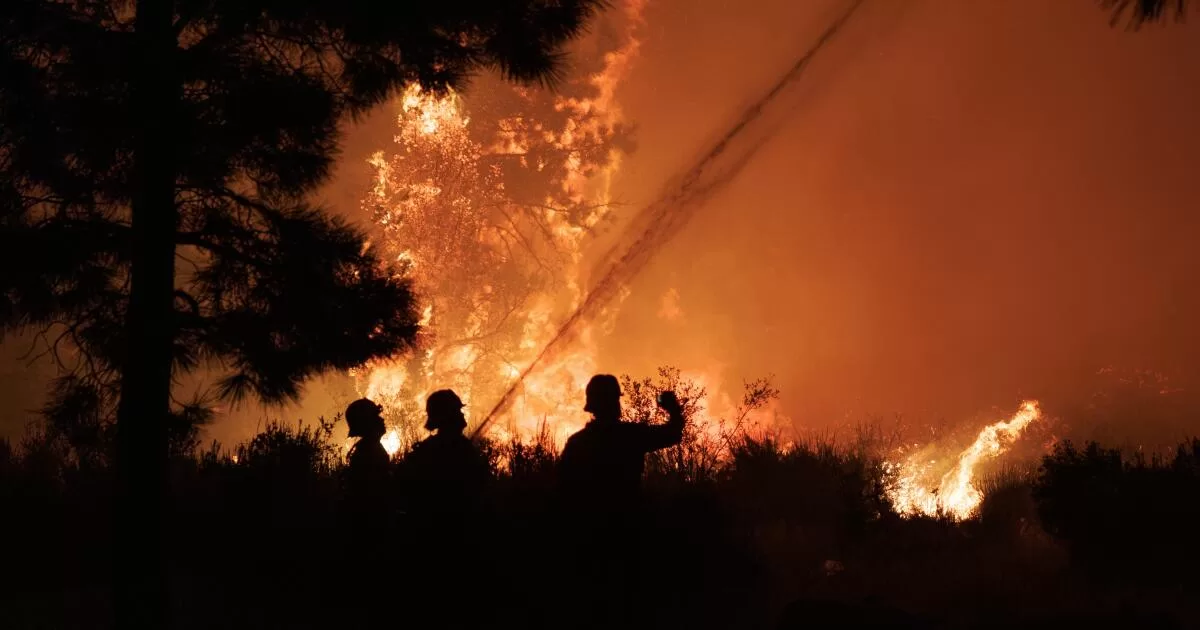There’s a lot more on the election ballot than Kamala Harris vs. Donald Trump, although those two rightfully are drawing extraordinary attention.
The race for the White House is sucking up all the oxygen, to echo an old political cliche. Voters can’t help but focus on the tight presidential contest and scratch their heads when they scan the rest of the California ballot.
It doesn’t help that this year’s collection of state ballot measures is exceptionally boring. Well, maybe not so much the anti-crime Proposition 36. But the rest are pretty much eye-glazers.
Yet, there are three that are indisputably important. They could affect California living and people’s pocketbooks.
Voters are being asked to add $20 billion to the state’s debt to modernize school facilities, dampen wildfires and prevent all sorts of climate-related catastrophes. That’s a huge trade-off: more state debt for much-needed infrastructure upgrades.
It’s what two propositions are about.
The third would make it easier for local governments to issue bonds — borrow — to build affordable housing and public works. Paying off these local bonds would lead to slightly higher property taxes.
Here’s what you’re voting on specifically:
Proposition 2 is a $10-billion bond issue to repair, modernize and construct facilities at K-12 schools and community colleges.
Proposition 4 is another $10-billion bond proposal. It would pay for projects to store water, clean polluted water, reduce wildfire risk, prepare for sea-level rise and protect fish and wildlife.
Proposition 5 is a biggie for local communities. It would reduce from two-thirds to 55% the vote required to pass bonds for affordable housing or public infrastructure such as roads, fire stations and water treatment plants.
All the potential projects in Propositions 2 and 4 seem wonderful. But what makes me wince is the long payoff periods — 35 years at $500 million annually for Proposition 2 and 40 years at $400 million annually for Proposition 4.
My great-grandkid would be helping to pay off those bonds.
People who pitch government bonds like to compare it to taking out a mortgage to buy a house. But no one gets a 40-year home loan. The longer the payoff period, the higher the interest cost.
But Gov. Gavin Newsom and the Legislature wanted to keep the annual payouts as low as possible — while they’re still in office. Let future generations of office holders fret about the annual $900-million hits on the state budget.
Even without Propositions 2 and 4, the state is paying about $6 billion each year on $80 billion in bond debt, according to the nonpartisan Legislative Analyst‘s Office. Plus, voters have approved about $35 billion in bonds that haven’t yet been sold.
The state still is paying off several old school bonds, one dating back 50 years.
“Start with the fact that Californians already are overtaxed. Sacramento is awash in tax revenue. So why are we going more into debt? If something is necessary, why not pay for it [with cash] out of the general fund?” asks Jon Coupal, president of the Howard Jarvis Taxpayers Assn. He opposes all three ballot measures.
The answer is that the Democratic governor and Legislature have many competing spending priorities to fund out of a dicey budget that’s in danger of operating in the red for the foreseeable future.
So, the only way lots of public works projects will get financed is through voter-approved bonds.
The state is out of school bond money, says Nick Hardeman, the campaign manager for Proposition 2.
“Like in your home, a roof is going to last only so long. If it leaks, it’s not going to stay the same. It’s going to get worse. There’s a $4-billion backlog of school repairs needed in California,” Hardeman says.
The measure would provide $8.5 billion for K-12 schools and $1.5 billion for community colleges. To qualify for state money, local districts would need to put up matching dollars
One especially good expenditure: $600 million for “career tech” — what we used to call “shop.” Too bad there’s not more money for that.
“Not every kid is expected to go to college,” Hardeman notes. “Like future plumbers and electricians. They can get an early start with apprenticeship programs.”
Proposition 4 is a buffet of water and climate-related funding, with minimal pork — unlike some past parks bonds. There’s $3.8 billion for water, $1.5 billion for wildfire prevention, $1.2 billion to protect against sea-level rise, $1.2 billion for fish and wildlife habitat — and other climate-related goodies.
“This bond advances many of the governor’s priorities,” says Alfredo Gonzales, the Proposition 4 campaign chairman. But he adds that Newsom, surprisingly, wasn’t really involved in the measure’s drafting.
Proposition 5 would lower the voter threshold for passage of most local bonds to 55% — the same as for school bonds the last 20 years.
I’ve always thought the majority should rule on most matters.
“One-third of a community shouldn’t make decisions for the other two-thirds,” says Assembly Majority Leader Cecilia Aguiar-Curry (D-Winters), a former city council member who has been pushing majority rule for years. She finally won legislative passage of Proposition 5.
Polling last month by the nonpartisan Public Policy Institute of California showed that likely voters were about evenly split on Proposition 5. That meant it was in trouble.
Voters barely favored Proposition 2 (54%) and were comfortably supporting Proposition 4 (65%). But few probably had much idea what the measures were about.
“One $10-billion bond is a lot of money,” says PPIC pollster Mark Baldassare. “Two are definitely a lot of money.”
Yes, but they add up to worthwhile investments.
